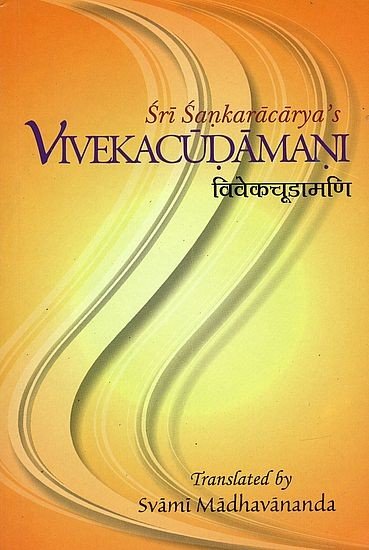Vivekachudamani
by Shankara | 1921 | 49,785 words | ISBN-13: 9788175051065
The Vivekachudamani is a collection of poetical couplets authored by Shankara around the eighth century. The philosophical school this compilation attempts to expose is called ‘Advaita Vedanta’, or non-dualism, one of the classical orthodox philosophies of Hinduism. The book teaches Viveka: discrimination between the real and the unreal. Shankara d...
Verse 247
ततस्तु तौ लक्षणया सुलक्ष्यौ
तयोरखण्डैकरसत्वसिद्धये ।
नालं जहत्या न तथाजहत्या
किन्तूभयार्थात्मिकयैव भाव्यम् ॥ २४७ ॥tatastu tau lakṣaṇayā sulakṣyau
tayorakhaṇḍaikarasatvasiddhaye |
nālaṃ jahatyā na tathājahatyā
kintūbhayārthātmikayaiva bhāvyam || 247 ||247. Hence those two terms (Ishwara and Jīva) must be carefully considered through their implied meanings, so that their absolute identity may be established. Neither the method of total rejection nor that of complete retention will do. One must reason out through the process which combines the two.
Notes:
[There are three kinds of Lakshaná or implied meaning. The Jahati, the Ajahati and the Bhaga Lakshaná. The first is that in which one of the terms has to give up its primary meaning. For example, the phrase “gaṃgāyāṃ ghoṣaḥ” does not mean that a village of cowherds is in the Ganges, but on the Ganges. The second kind is that in which the primary meaning is retained but something is sup-
plied to make it clear, as the sentence means a white (horse) is running.” In the third kind of Lakshna each of the terms lias to give up a part of its connotation, see the next Sloka. ]
